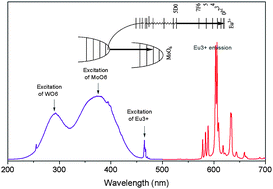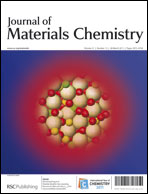Investigation of the structure and photoluminescence properties of Eu3+ ion-activated Y6WxMo(1 − x)O12†
Abstract
A series of Eu3+ ion-activated Y6WxMo(1 − x)O12 polycrystalline powders were synthesized using a solid-state reaction. The crystal structure,


 Please wait while we load your content...
Please wait while we load your content...